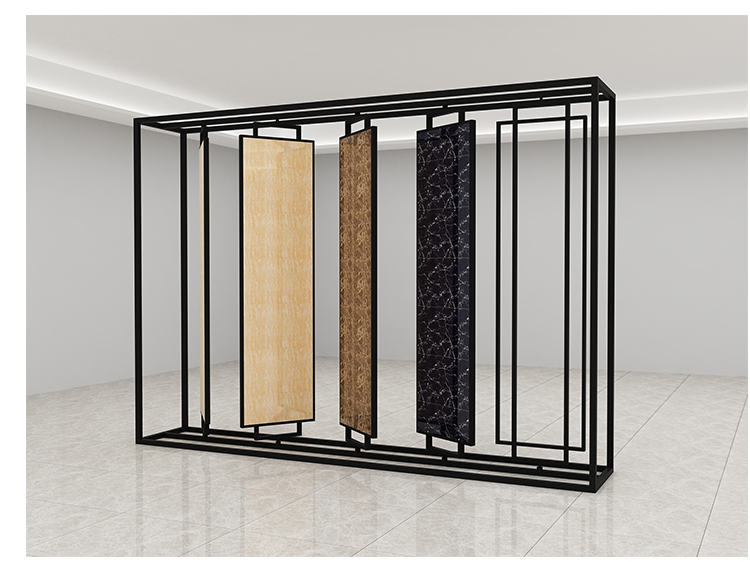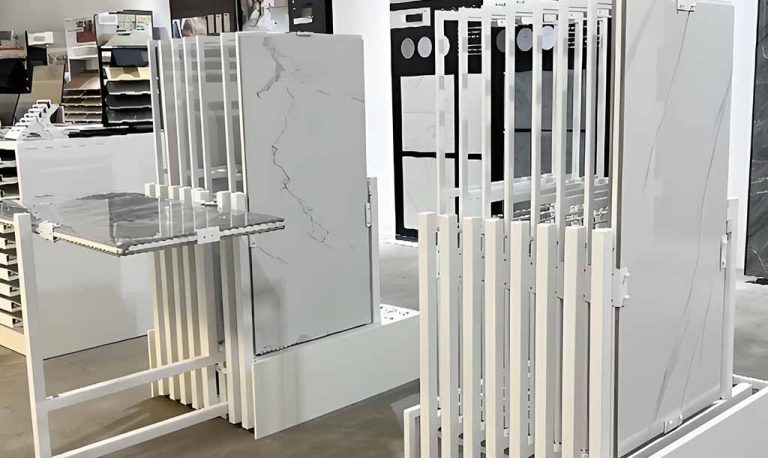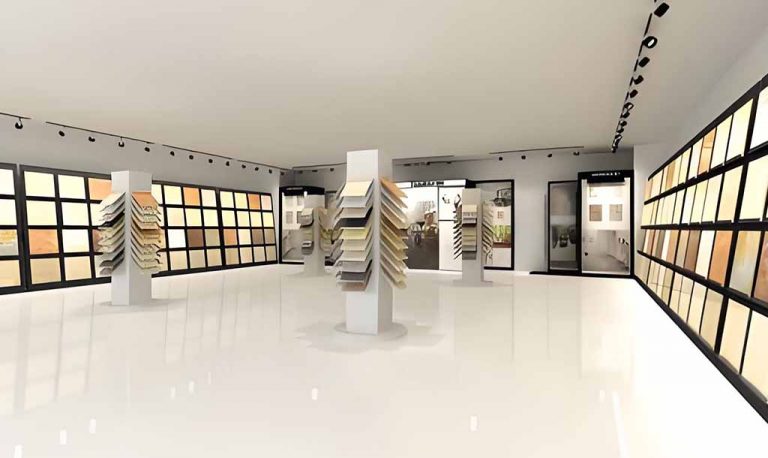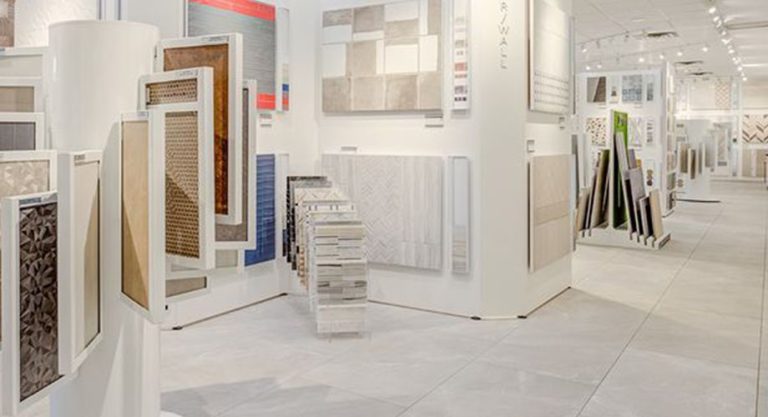A STONE DISPLAY SOLUTION EXPERT !

Intelligent and Digital Tile Display Racks: The Transformative Power for Tile Sales
Table of Contents
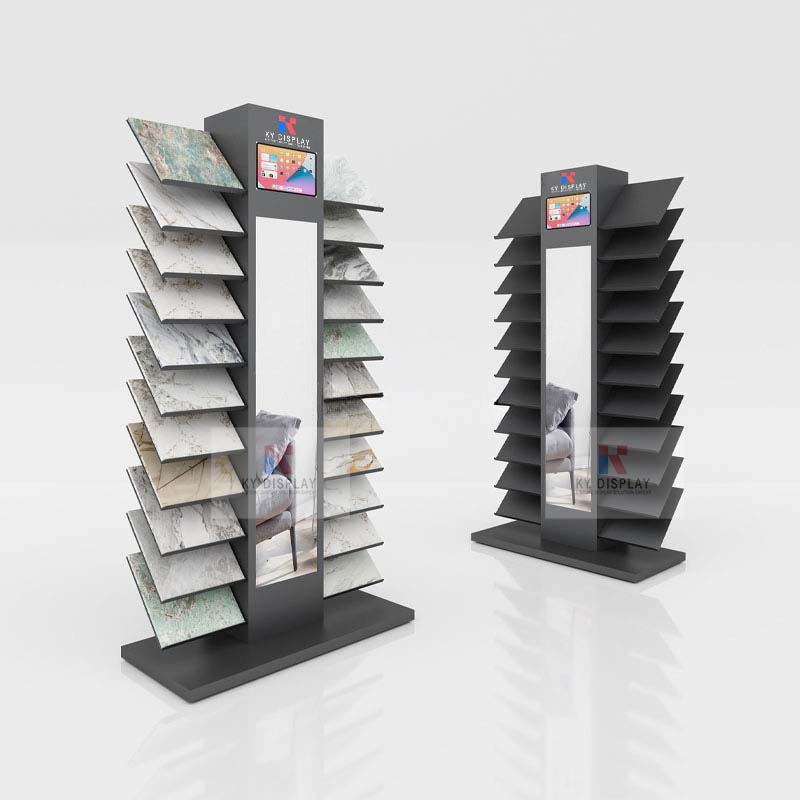
Digital Tile Display Racks are transforming how tiles are presented and sold in the competitive world of tile sales, . These innovative racks are equipped with advanced features such as high-resolution touchscreens and interactive technologies that improve customer experience and increase sales. By offering a smarter way to display and interact with tile products, these racks are a game-changer for retailers.
I. Solving the Pain Points of Traditional Display Racks
(I) The Problem of Information Scarcity
Traditional display racks usually only present simple tile samples, making it difficult for customers to understand the full potential of tiles. Smart tile display units, such as digital tile display racks, provide a solution by offering high-resolution touchscreens. For example, in large cities’ high-end tile showrooms, customers can interact with a touchscreen display to see vivid renderings of tiles in kitchens, bathrooms, and various decoration styles. These systems not only display tile designs but also offer detailed product information like material composition and hardness grade.
As part of this technological shift, showrooms are seeing remarkable results. In the first four months after adopting these intelligent tile showroom technology systems, customer engagement increased by 35%, and sales grew by 25%.
(II) The Challenge of Lack of Interactivity
Another limitation of traditional display racks is the lack of interactivity. Customers cannot intuitively compare how tiles will look in different spaces. With the introduction of augmented reality (AR) tile displays in interactive tile display systems, this problem is solved. Customers can use mobile phones or tablets to scan tile samples and view the virtual effect of those tiles in their own homes.
After implementing this technology in a tile retailer, customer interaction increased dramatically. The average time spent in-store went up by 20 minutes per visit, leading to a noticeable boost in impulse purchases. Virtual reality (VR) technology, now incorporated into many showrooms, further enhances the customer experience. By wearing VR headsets, customers can take virtual tours through rooms filled with tile samples, enjoying a comprehensive, immersive shopping experience.
II. Technological Applications of Digital and Intelligent Display Racks
(I) Touch Interaction Technology
Digital tile display racks incorporate touchscreens based on capacitive technology, which offers smooth interaction with customers. These displays are connected to a content management system that stores and quickly retrieves high-definition images and detailed data. This connectivity ensures customers receive rich, accurate information as they interact with the product displays.
(II) AR and VR Technologies
Augmented reality (AR) tile displays enable customers to virtually see tile effects in their space by recognizing tile samples through a smartphone or tablet camera. This technology uses advanced object recognition and image rendering algorithms to overlay realistic virtual images onto the customer’s environment. Similarly, VR technology provides customers with the opportunity to explore a 3D showroom remotely, enhancing the immersive shopping experience.
(III) Data Collection and Analysis Technology
Interactive tile display systems now include infrared or ultrasonic sensors that monitor customer activity. The data is collected, analyzed, and presented through a dashboard, offering insights that can drive tailored marketing strategies and more efficient inventory management.
III. Assistance to Tile Sales
(I) Enhancing Customers’ Willingness to Purchase
The combination of interactive tile display systems and digital tile display racks creates a highly engaging environment for customers. This experience drives up both interest and time spent in showrooms, ultimately boosting the likelihood of a purchase.
(II) Optimizing Product Display and Space Utilization
Virtual displays reduce the need for large quantities of physical samples, enabling tile stores to optimize space and layout. By making room for flooring sample display units or adding comfortable seating areas, these digital systems help improve the shopping environment and increase customer satisfaction.
(III) Precise Marketing and Inventory Management
Using data from customer interaction and sensors in the digital tile display racks, retailers can gain valuable insights. They can target specific promotions or optimize product placement based on customer preferences. This precise strategy led to a significant 60% increase in sales within six weeks at one tile store chain.
Conclusion
Digital tile display racks are revolutionizing how tiles are showcased in the modern retail space. From smart tile display units with interactive features like augmented reality tile displays to efficient space management, they transform customer engagement and sales strategies. With intelligent tile showroom technology, these systems offer a powerful tool for retailers to differentiate their businesses in the competitive tile market.


